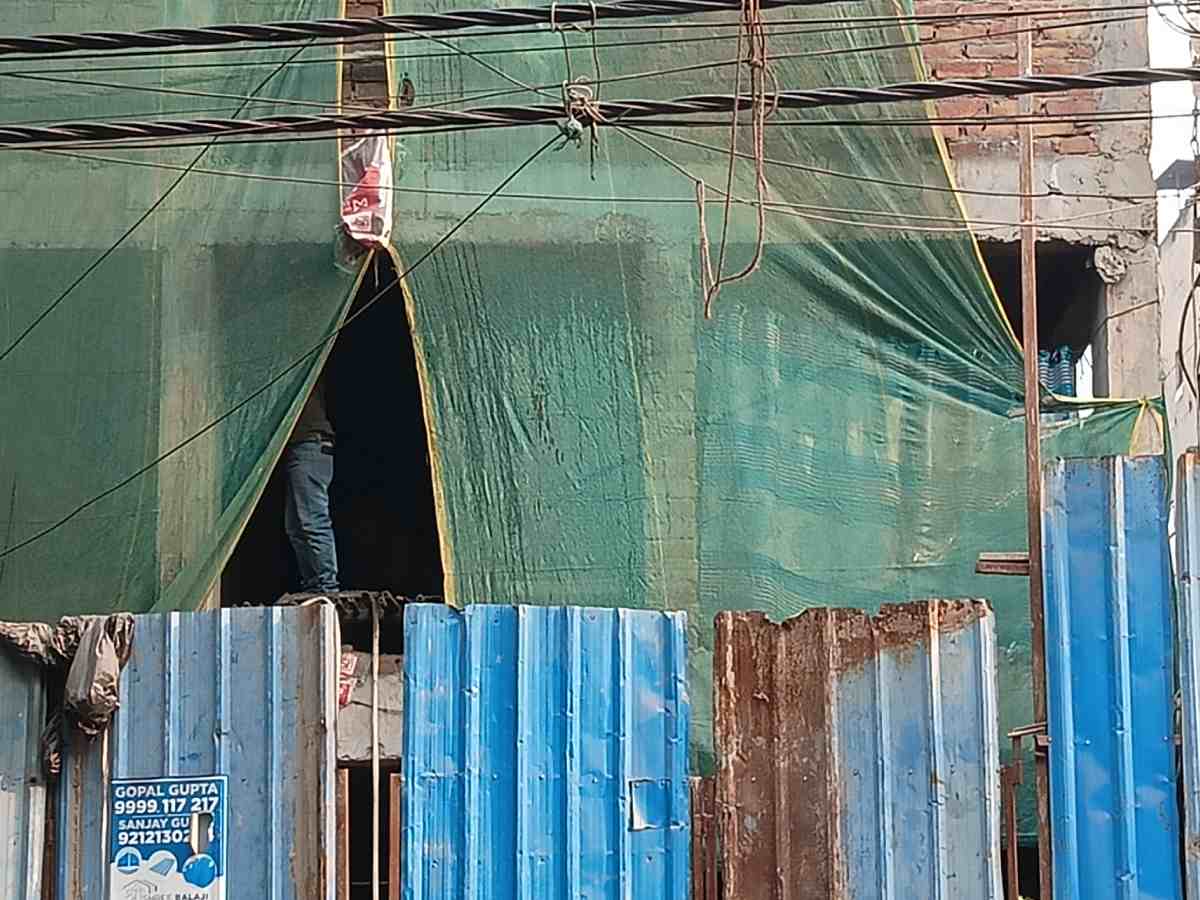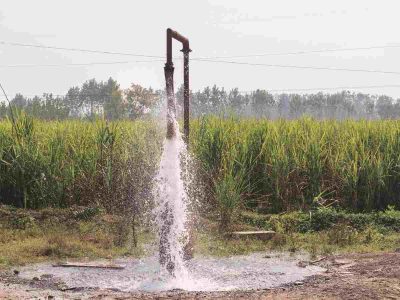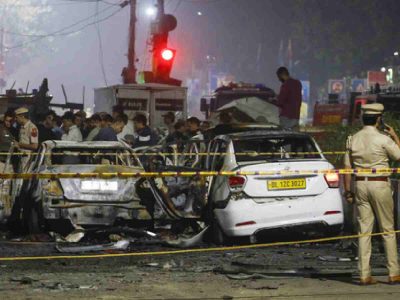Delhi Pollution: Delhi’s worsening pollution has led to a sharp rise in the number of complaints received by the Delhi government’s Green War Room ini tiative. The Green War Room is a helpline and monitoring centre established to address public griev ances related to air pollution and to ensure quick redressal.
The national capital has already witnessed over 20,000 pollution related complaints this year, Patriot has learnt. In comparison, the entirety of 2023 saw over 17,500 complaints. Currently, the total number of complaints received stands at around 80,500 since 2020, the year of the initiative’s inception.
“There remains a backlog of around 10,000 complaints”, sources said. Although the number of unre solved complaints may seem man ageable, the fact that 12.4% of com plaints are still pending has led some residents of Delhi to ignore the air quality rules, as they perceive the enforcement to be weak and incon sistent. The backlog undermines the enforcement of these rules, making people feel they don’t need to follow them strictly.
Also read: Suffering from toxic air, starved of learning: How school students are suffering in Delhi
How is Delhi’s air quality faring?
Delhi is facing a dire problem concerning its air quality, with the Air Quality Index (AQI) fluctuating among the ‘severe plus’, ‘severe’ and ‘very poor’ categories. The sea son’s highest AQI was recorded on November 18, as the national capital’s air quality dipped to its worst at 494.
Experts have speculated that this was the worst streak of air quality in recent years, as Delhi experienced ‘severe plus’ and ‘severe’ levels of pollution for five consecutive days. As a result, the CAQM announced the invocation of Stage-4 of the Graded Response Action Plan (GRAP) to control pollution levels and hopefully reduce them.
Construction activities continue across Delhi
Despite directions from the CAQM to ban all construction activities across the national capital, these have mostly fallen on deaf ears. The disregard for the directive has led to rising pollution levels. Multiple construction sites remain active without any sign of closure, especially in tight-knit community market areas and some residential areas.
Karol Bagh
Areas such as Karol Bagh have multiple commercial constructions still underway even after GRAP-4 was implemented, essentially flouting the directives issued by the CAQM. Long stretches of the motor market at Naiwala are filled with under-construction houses and shopping complexes. Although the dust has made breathing difficult, nobody in the area seems to care. A periphery of blue tin walls surrounds these under-construction properties, with many still in the process of laying the foundation.
With workers living inside these facilities, it does not take much investigation to understand the ongoing work. Almost all of these construction sites are actively progressing. On the other hand, several completed buildings are undergoing renovation as well. Most of them have been under construction for the past two months, while some started during the week when GRAP was invoked. Ironically, even when GRAP-3 was in effect, which directed a ban on all non-essential construction activities, no change was evident on the ground.
According to CAQM guidelines, the Municipal Corporation of Delhi (MCD) has the authority to halt all such construction activities across the national capital. However, the visible result has been incompetence, with no closures reported. Local shop owners have indicated that nobody from the market community complains because of how closely knit the entire community is, and they all benefit if everyone cooperates. “We are united, and we have our own union to worry about. Why would we complain when we might have to complete our own constructions later?” said Vikas Mehra, an automobile parts shop owner at Naiwala. According to CAQM guidelines, the Municipal Corporation of Delhi (MCD) has the authority to halt all such construction activities across the national capital. However, the visible result has been incompetence, with no closures reported. Local shop owners have indicated that nobody from the market community complains because of how closely knit the entire community is, and they all benefit if everyone cooperates. “We are united, and we have our own union to worry about. Why would we complain when we might have to complete our own constructions later?” said Vikas Mehra, an automobile parts shop owner at Naiwala.
The usual practice of using an insulated green sheet and the constant sprinkling of water, which is supposed to be followed even when GRAP is not in effect, was not seen. Most of the green sheets, although placed at nearly all sites, had started to deteriorate, falling apart at the seams. It was clear that the directives were not being fol lowed even when construction work commenced.
Wazirpur Industrial area
A similar pattern can be seen in other industrial areas such as Wazirpur Industrial Area, where multiple shopping complexes remain under construction. These sites function without fear, operat ing with complete impunity. The glaring issue is that these sites are situated near Wazirpur and Ashok Vihar’s residential areas. Violations include ongoing construction despite GRAP-4 directives, along side the absence of scaffolding or water sprinkling.
Punjabi Bagh
The directives continue to be ignored across multiple areas. Upscale residential neighbour hoods in Punjabi Bagh have also been noted as offenders of GRAP violations, as MCD and other concerned authorities fail to take any significant action.
A row of houses situated next to one another is the first sight as one enters Punjabi Bagh’s posh neighbourhoods. The sound of steel being cut on circular saws echoes throughout. Even with a police booth right in front of the houses, these constructions have continued without interference. Workers have mentioned that at the current pace, they expect to finish construction within the next two months. However, they have noticed that fewer workers are now being allocated to the site.
A similar instance is seen across the road, where an entire building is being built from scratch without any scaffolding, with only a green sheet around its boundaries. Unfortunately, residents of the area have been left to deal with the situation on their own.
“We complained to the Residents Welfare Association (RWA), but they said they were our neighbours, and it’s only fair that they build their house in peace. We tried to protest, but the President pleaded with us to give them more time,” said Raksha Sharma, a resident.
MCD’s role
Most of these violations fall under the purview of the MCD and other civic agencies. However, given the reality of the situation in the national capital, they have been unable to control the violations. According to the Chairman of the Karol Bagh MCD Zone, Rakesh Joshi, it all comes down to how powerless the civic agency actually is.
“We only have the power to issue notices and challans. If they do not comply, then we break the buildings down, but that is the last course of action. We have teams that conduct regular patrols throughout the day to monitor pollution-emitting activities, but sometimes, especially with construction, some areas are missed. If any construction is happening in an alleyway, it might be missed, but generally, we visit all other places,” he said.
Joshi further highlighted that sometimes the team avoids direct confrontation to prevent physical violence. “We do not get police protection when the team conducts their daily surveys. Normally, they avoid any physical confrontation, which often makes their demand for a halt in activities somewhat timid. All we can do is serve notices. If we had police support, it would have been much more effective,” he said.
Currently, the civic agencies rely on complaints received at the Green War Room and the sites they identify themselves. However, Joshi stated that the latter has been more efficient.
Also read: Air pollution: Closed schools throttle livelihood of Delhi’s hawkers
Experts blame weak enforcement
According to Pushkar Pawar, a town planner with the MCD, weak enforcement of building guide lines and regulations has allowed illegal construction to flourish, despite existing measures. “Despite the presence of clear building regulations, weak enforcement has allowed illegal construction to flourish. In many cases, construction plans are approved, but the actual buildings deviate significantly from the approved designs. The lack of stringent monitoring, coupled with corruption within local municipal bodies, has created an environment where builders can proceed without facing legal con sequences. This lack of account ability perpetuates the illegal construction cycle, exacerbating the already chaotic urban landscape of Karol Bagh,” he said.
The presence of illegal constructions also allows builders to flout environmental standards set by the Delhi government and concerned agencies. “In some instances, builders carry out major construction projects or renovations without seeking approval from the Delhi Development Authority (DDA) or local municipal authorities. These unauthorised constructions may not follow safety guidelines or environmental standards, increasing the potential for accidents and long-term damage to the environment,” he noted.
He added that the failure to implement the Delhi Master Plan, which details all the regulations and guidelines, lies with the MCD and the DDA.
Earlier, on November 25, the Supreme Court had asked the CAQM to consider reopening schools and colleges in Delhi-NCR, but the relaxation of GRAP-IV norms remained out of the question due to the severe pollution levels and the need to prevent further deterioration of air quality.





